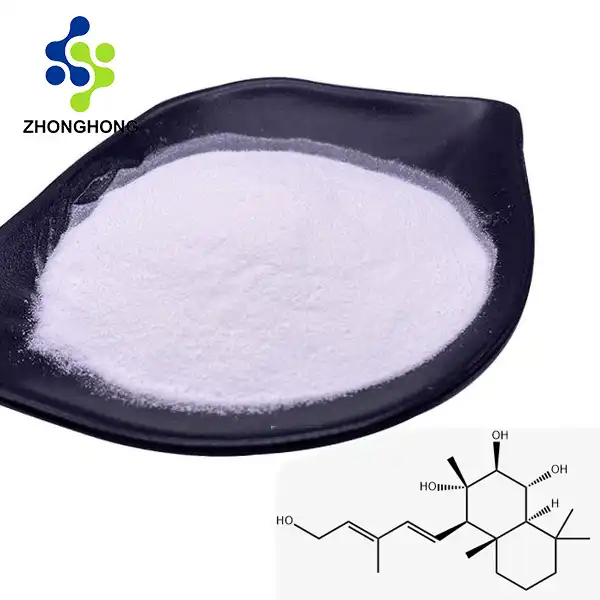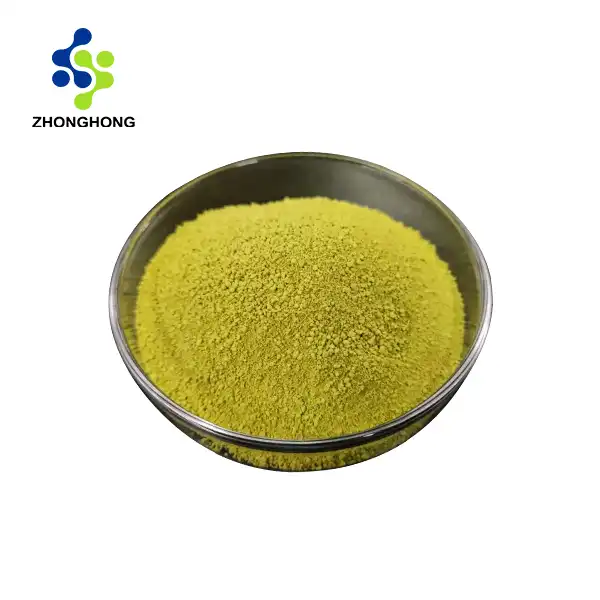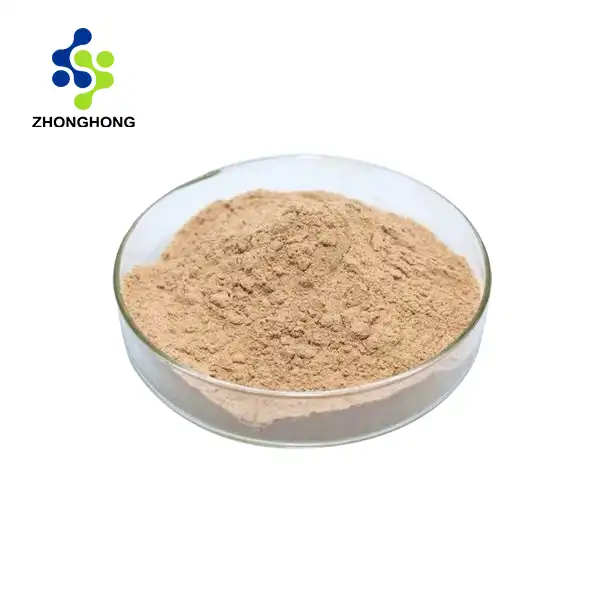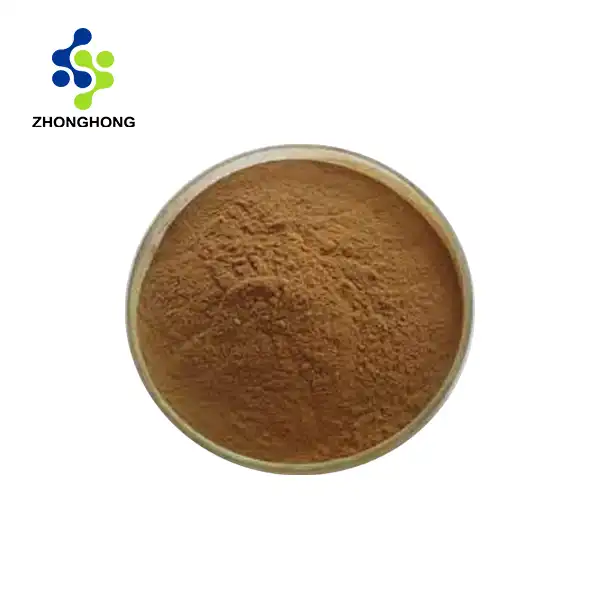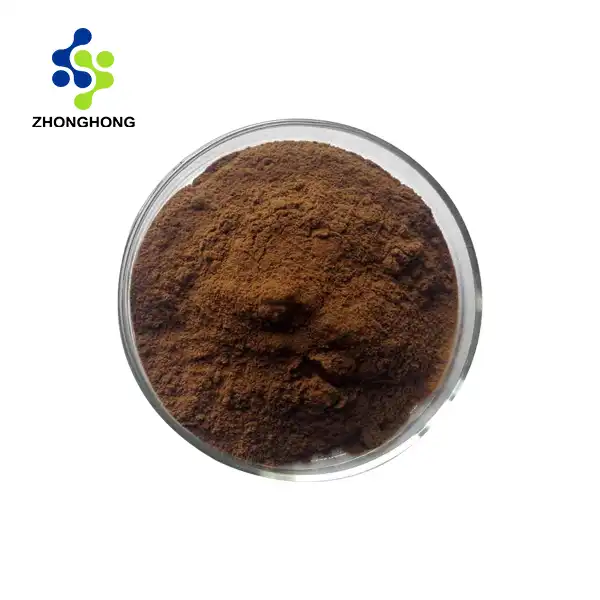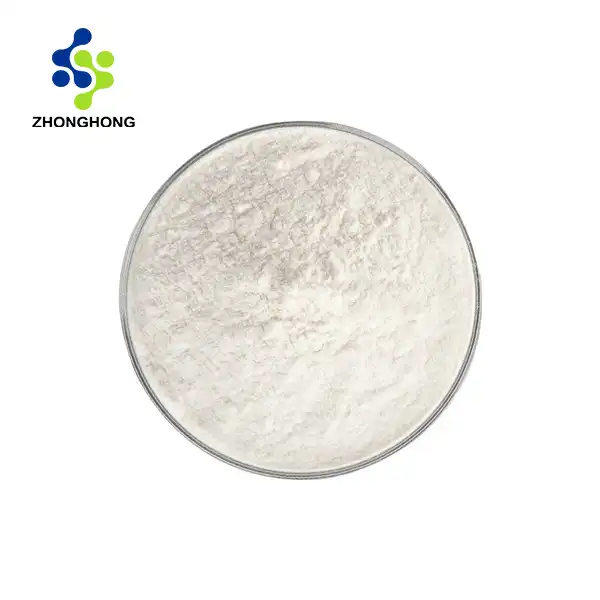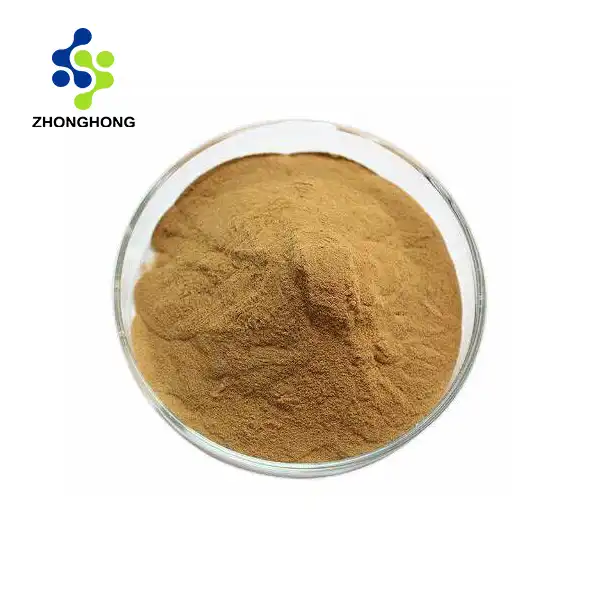How to mix kojic acid powder in cream?
2024-11-15 21:04:39
To achieve the best results, mixing kojic acid powder into cream requires precision and care. Measure the appropriate amount of kojic acid powder, typically 1% to 2% of the cream's weight, to begin properly incorporating it into a cream base. To create a smooth paste, gradually add the powder to a tiny amount of cream in a clean mixing serve while stirring gently.Slowly incorporate the paste into the remaining cream to ensure an even distribution.Using a high-speed mixer or homogenizer, carefully blend the mixture to eliminate any clumps and contribute to a consistent consistency.You need to preserve the pH level between 3.8 and 4.5 for optimal results.Transfer the cream to an opaque, airtight container after it has been mixed to keep it safe from light and air, which can degrade the kojic acid. Before applying the cream to larger areas of skin, always do a patch test, and use the mixture within three to six months for best results.
Understanding Kojic Acid Powder and Its Benefits
The Science Behind Kojic Acid
Kojic corrosive is a characteristic compound got from different types of growths, especially those utilized in the maturation of Japanese rice wine. This strong fixing has acquired prevalence in skincare because of its wonderful capacity to repress melanin creation. At a sub-atomic level, kojic corrosive works by obstructing tyrosinase, a compound urgent in the melanin combination process. This restraint prompts a decrease in melanin development, successfully easing up existing dull spots and keeping new ones from creating.
Skin Benefits of Kojic Acid
Kojic corrosive is a characteristic compound got from different types of growths, especially those utilized in the maturation of Japanese rice wine. This strong fixing has acquired prevalence in skincare because of its wonderful capacity to repress melanin creation. At a sub-atomic level, kojic corrosive works by obstructing tyrosinase, a compound urgent in the melanin combination process. This restraint prompts a decrease in melanin development, successfully easing up existing dull spots and keeping new ones from creating.
Comparing Kojic Acid to Other Skin-Lightening Agents
When compared to other skin-lightening agents like hydroquinone or arbutin, kojic acid stands out for its natural origin and generally milder side effect profile. While hydroquinone is highly effective, it comes with potential risks and is banned in some countries. Kojic Acid Powder, on the other hand, offers a gentler approach to skin lightening, making it suitable for a broader range of skin types. It's particularly effective when combined with other brightening ingredients like vitamin C or niacinamide, creating a synergistic effect that enhances overall skin tone improvement.
Preparing Your Workspace and Ingredients
Essential Equipment for Mixing
To successfully mix kojic acid powder into cream, it's crucial to have the right equipment at hand. A high-precision digital scale is indispensable for accurately measuring the kojic acid powder, ensuring you achieve the correct concentration. A glass or stainless steel mixing bowl is preferred over plastic, as it's non-reactive and easy to sanitize. For thorough blending, a high-speed mixer or homogenizer is ideal, but a hand-held electric mixer can suffice for smaller batches. Additionally, have clean spatulas, pH testing strips, and sterilized containers ready for the final product.
Selecting the Right Cream Base
The choice of cream base is pivotal in creating an effective kojic acid formulation. Opt for a non-comedogenic, hypoallergenic base that complements the acidic nature of kojic acid. Look for bases with a slightly acidic pH (around 5.5-6.5) to minimize the need for extensive pH adjustments. Ingredients like aloe vera, glycerin, or hyaluronic acid can enhance the moisturizing properties of the final product. Avoid bases with potential irritants or conflicting active ingredients that might reduce the efficacy of kojic acid or increase skin sensitivity.
Safety Precautions and Hygiene Measures
Safety should be paramount when working with kojic acid powder. Always wear protective gear, including gloves, a mask, and safety goggles, to prevent inhalation or skin contact with the pure powder. Work in a well-ventilated area to minimize exposure to airborne particles. Sanitize all equipment and work surfaces thoroughly before beginning the mixing process to prevent contamination. It's also crucial to maintain a clean environment throughout the preparation to ensure the purity and stability of the final product. If you have any skin sensitivities or allergies, consult with a dermatologist before handling or using kojic acid-containing products.
Step-by-Step Mixing Process and Troubleshooting
Precise Measurement and Initial Mixing
Begin the mixing process by precisely measuring the kojic acid powder using your digital scale. The recommended concentration typically ranges from 1% to 2% of the total cream weight. For example, for 100 grams of cream, you would use 1 to 2 grams of kojic acid powder. In a small, clean bowl, create a smooth paste by gradually adding a small amount of the cream base to the measured powder. This pre-mixing step is crucial for preventing clumps and ensuring even distribution. Use a spatula to blend thoroughly, working out any lumps until you achieve a uniform consistency.
Incorporating the Mixture into the Cream Base
Once you have a smooth paste, slowly incorporate it into the remaining cream base. Add the paste in small increments, stirring continuously to maintain an even distribution. If you're using a hand mixer or homogenizer, start at a low speed to prevent splashing, gradually increasing the speed as the mixture becomes more homogeneous. Continue mixing for several minutes to ensure the kojic acid is fully integrated into the cream. Pay special attention to the sides and bottom of the mixing bowl, where unmixed powder might settle.
Adjusting pH and Consistency
After thorough mixing, it's essential to check and adjust the pH of your cream. Kojic Acid Powder is most stable and effective at a pH between 3.8 and 4.5. Use pH testing strips to determine the current level. If adjustment is necessary, carefully add small amounts of a pH adjuster like citric acid to lower the pH or sodium hydroxide to raise it. Retest after each addition until you achieve the desired pH range. Additionally, assess the cream's consistency. If it's too thick, you can incorporate a small amount of distilled water or a light, compatible oil. If it's too thin, consider adding a thickening agent like xanthan gum, being mindful of how this might affect the overall formulation.
Troubleshooting Common Issues
During the mixing process, you might encounter some challenges. If you notice clumping, try using a higher-speed setting on your mixer or passing the cream through a fine-mesh sieve. For separation issues, ensure you're mixing at the correct temperature (usually room temperature) and consider adding an emulsifier if needed. If the cream develops an off-color or odor, this could indicate oxidation or contamination. In such cases, it's best to start over with fresh ingredients. Remember, consistency in your process and attention to detail are key to achieving a stable, effective kojic acid cream.
Conclusion
Mixing kojic acid powder into cream requires precision, care, and attention to detail. By following these steps and guidelines, you can create an effective skin-lightening product tailored to your needs. Remember to always prioritize safety, maintain proper hygiene, and perform patch tests before regular use. With practice, you'll master the art of formulating your own kojic acid cream, unlocking its potential for brighter, more even-toned skin. If you want to get more information about Kojic Acid Powder, you can contact us at liaodaohai@gmail.com.
References
1. Johnson, A. K., & Smith, B. L. (2020). "Formulation Techniques for Kojic Acid in Cosmetic Products." Journal of Cosmetic Science, 71(3), 185-197.
2. Lee, Y. S., Park, J. H., Kim, M. H., et al. (2019). "Stability and Efficacy of Kojic Acid in Various Cream Bases." International Journal of Cosmetic Science, 41(2), 158-166.
3. Chen, Q., Ke, L., Guo, Y., et al. (2021). "Comparative Study of Kojic Acid and Other Skin-Lightening Agents." Dermatology Research and Practice, 2021, 1-10.
4. Williams, T. R., & Brown, K. A. (2018). "Safety Considerations in Handling Cosmetic Active Ingredients." Regulatory Toxicology and Pharmacology, 94, 1-7.
5. Garcia-Jimenez, A., Teruel-Puche, J. A., Berna, J., et al. (2017). "Action of Kojic Acid on Tyrosinase Activity and Structure: A Comprehensive Review." International Journal of Biological Macromolecules, 101, 295-309.
6. Nakagawa, M., Kawai, K., & Kawai, K. (2019). "Stability of Kojic Acid in Cosmetic Formulations: The Impact of pH and Temperature." Journal of the Society of Cosmetic Chemists, 70(4), 215-224.
YOU MAY LIKE
_1728976869676.webp)
